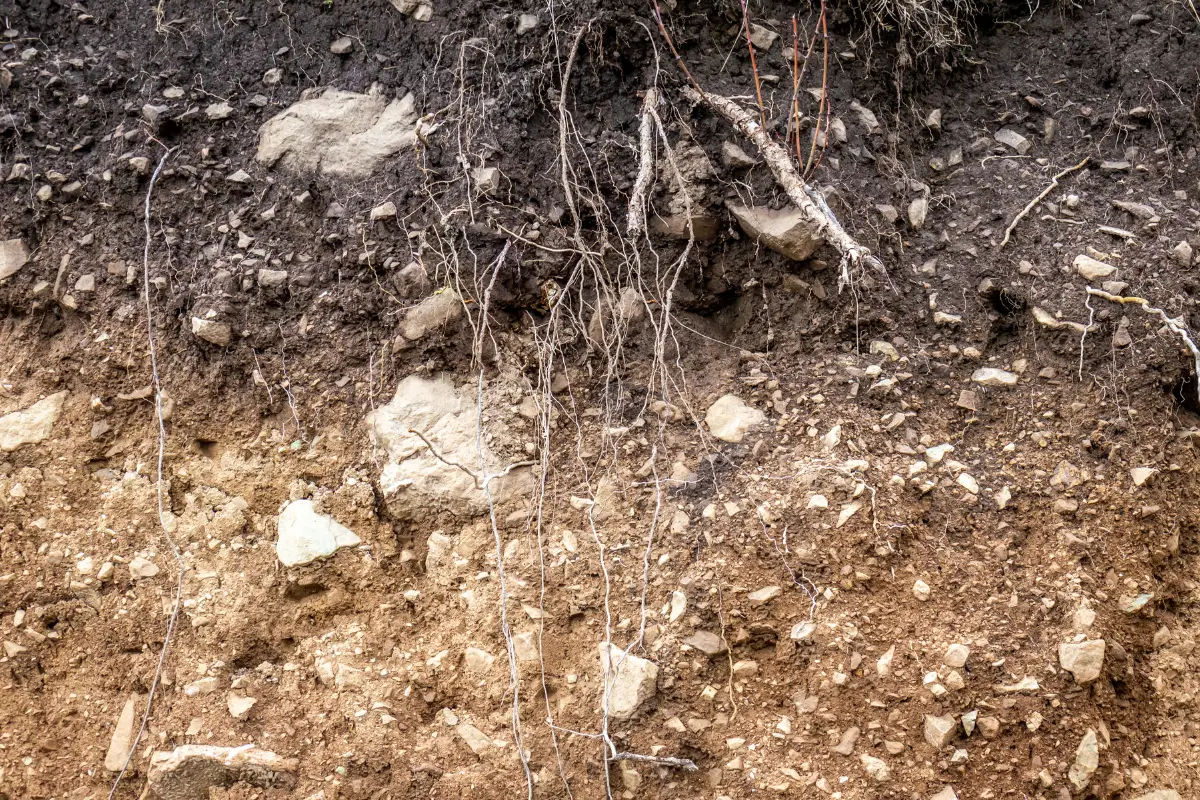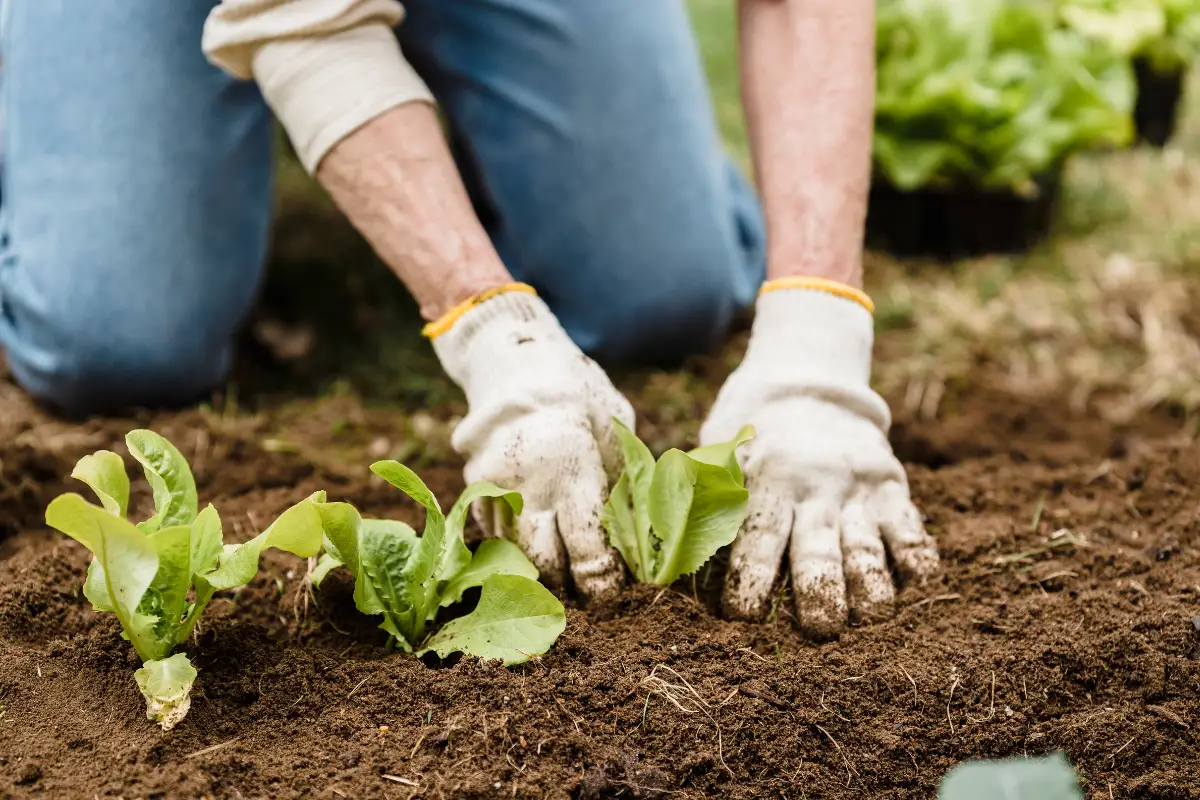Peat bogs are unique ecosystems that are formed over thousands of years.
These wetlands are characterized by their spongy, acidic soil and are home to a variety of plant and animal species.
Peat bogs are also an important carbon sink, storing large amounts of carbon that would otherwise be released into the atmosphere.
Peat bogs form when dead plant material accumulates in a waterlogged environment.
The lack of oxygen in the water slows down the decomposition process, allowing the dead plant material to build up over time.
As the layers of dead plant material continue to accumulate, they eventually form peat, a type of soil that is composed of partially decomposed organic matter.
Over time, the peat becomes compacted and begins to form the characteristic spongy soil of a peat bog.

Table of Contents
The Nature of Peat Bogs
Peat bogs are unique wetland ecosystems that are characterized by their spongy, acidic, and nutrient-poor soil.
They are formed over thousands of years through a process called peat accumulation, which occurs when dead plant material, such as mosses and sedges, accumulates faster than it can decompose.
Peat bogs are typically found in cool, northern climates, where the slow decomposition rate of plant material is due to the low temperatures and acidic conditions.
They can also be found in other areas with high rainfall and low nutrient availability, such as mountainous regions or areas with poor drainage.
Peat bogs are incredibly important for the environment, as they provide habitat for a wide variety of plant and animal species.
They also play a crucial role in carbon storage, as the peat that accumulates within them contains large amounts of carbon that would otherwise be released into the atmosphere if the plant material were to decompose.
Despite their ecological importance, peat bogs are under threat from human activities such as drainage, peat extraction, and land use change.
These activities can have negative impacts on the biodiversity of the ecosystem, as well as on the ability of the peat bog to store carbon and mitigate climate change.
Formation Process
Peat bogs are wetlands that are formed by the accumulation of partially decomposed plant material called peat.
The formation process of peat bogs is a slow and gradual process that takes thousands of years.
The process begins with the accumulation of dead plant material in an area with poor drainage.
As the dead plant material accumulates, it forms a layer of peat that is several feet thick.
The formation of peat bogs is influenced by several factors, including climate, geology, and vegetation.
Bogs are generally found in cool, northern climates where the rate of decomposition is slow.
The lack of oxygen in the waterlogged soil slows down the decomposition process, allowing the peat to accumulate over time.
The formation of peat bogs can be divided into three stages: the fen stage, the transitional stage, and the raised bog stage.
The fen stage begins with the accumulation of dead plant material in an area with poor drainage.
As the dead plant material accumulates, it forms a layer of peat that is several feet thick. The fen stage is characterized by the presence of nutrient-rich ground water that supports the growth of vegetation.
The transitional stage begins when the fen starts to dry out, and the water table drops. The vegetation in the area changes from fen vegetation to bog vegetation, such as sphagnum moss.
The transitional stage is characterized by the presence of a layer of peat that is several feet thick and the absence of nutrient-rich ground water.
The raised bog stage begins when the water table drops below the surface of the peat layer.
The vegetation in the area changes from bog vegetation to raised bog vegetation, such as heather and cotton grass.
The raised bog stage is characterized by the presence of a layer of peat that is several meters thick and the absence of nutrient-rich ground water.
Factors Influencing Peat Bog Formation
Peat bogs form as a result of incomplete decomposition of plant remains in waterlogged conditions.
The process of peat formation is slow, and it takes thousands of years to form a significant layer of peat.
Several factors influence the formation of peat bogs, including climate, geographical location, and water availability.
Climate
Climate plays a crucial role in the formation of peat bogs. Peat bogs are found in areas with cool, wet climates, such as in the northern hemisphere.
The cool temperatures slow down the rate of decomposition of plant material, allowing the accumulation of peat over time.
The high rainfall in these areas also contributes to the formation of peat bogs by creating waterlogged conditions that prevent the complete decay of plant material.
Geographical Location
The geographical location of an area also affects the formation of peat bogs. Peat bogs are often found in areas that were previously glaciated, such as in Northern Europe and Canada.
Glaciers create depressions in the landscape that later become filled with water, creating the ideal conditions for the formation of peat bogs.
Additionally, peat bogs are found in regions with low relief, such as in the coastal plains, where water accumulates and creates wetland conditions.
Water Availability
Water availability is another critical factor in the formation of peat bogs. Peat bogs form in areas with high water tables, where water accumulates and creates waterlogged conditions.
The water table in these areas is often close to the surface, preventing the complete decay of plant material.
The accumulation of peat over time raises the surface level of the bog, creating a higher water table and perpetuating the formation of peat.
Types of Peat Bogs
Peat bogs are classified into two main types: raised bogs and blanket bogs.
Both types of bogs are formed from the accumulation of partially decayed plant matter, but they differ in their physical characteristics and origins.
Raised Bogs
Raised bogs, also known as ombrotrophic bogs, are dome-shaped bogs that form in areas with high rainfall and low temperatures.
They are typically found in the Northern Hemisphere, including Canada, Europe, and Russia.
Raised bogs are formed when the water table is above the surface of the bog, preventing nutrients from being transported from the surrounding soil.
As a result, the bog is nutrient-poor and highly acidic, with a pH between 3.0 and 4.5.
Raised bogs are characterized by a layer of peat that can be up to 20 meters thick.
The peat forms from the accumulation of dead plant material, primarily sphagnum moss, which grows on the surface of the bog.
Over time, the dead plant material is compressed and decomposes, forming peat.
The surface of the bog is covered with a layer of living sphagnum moss, which continues to grow and add to the peat layer.
Blanket Bogs
Blanket bogs, also known as topogenous bogs, are flat, blanket-like bogs that form in areas with high rainfall and poor drainage.
They are typically found in upland areas, such as mountains and plateaus, in the Northern Hemisphere, including the United Kingdom and Ireland.
Blanket bogs are formed when the water table is at or below the surface of the bog, allowing nutrients to be transported from the surrounding soil.
As a result, the bog is nutrient-rich and less acidic than raised bogs, with a pH between 4.5 and 5.5.
Blanket bogs are characterized by a layer of peat that can be up to 10 meters thick. The peat forms from the accumulation of dead plant material, including heather, cotton grass, and other bog plants.
The surface of the bog is covered with a layer of living bog plants, which continue to grow and add to the peat layer.
Blanket bogs are important habitats for a variety of plant and animal species, including rare and endangered species.
Importance of Peat Bogs
Peat bogs are not only fascinating ecosystems but also play important roles in the environment.
They are considered to be one of the most valuable ecosystems on the planet due to their unique characteristics.
In this section, we will discuss the importance of peat bogs in terms of carbon storage and biodiversity.
Carbon Storage
Peat bogs are known for their ability to store carbon. They are considered to be one of the largest carbon sinks on the planet.
The peat that accumulates in the bogs is made up of partially decayed plant matter, which is mainly composed of carbon.
The carbon is stored in the peat for thousands of years, preventing it from being released into the atmosphere as carbon dioxide.
This makes peat bogs an important tool in the fight against climate change.
Biodiversity
Peat bogs are also home to a wide variety of plant and animal species, making them important for biodiversity.
The unique conditions found in peat bogs support a range of specialized plant species, such as sphagnum mosses, which are adapted to the acidic and nutrient-poor environment.
In turn, these plants provide habitats for a variety of insects, birds, and mammals. Many of these species are rare and endangered, making peat bogs important for conservation efforts.
However, peat bogs are under threat from human activities such as drainage, peat extraction, and land-use change.
These activities not only release carbon into the atmosphere but also destroy habitats for many plant and animal species.
Therefore, it is important to protect and conserve peat bogs to maintain their important roles in carbon storage and biodiversity.
Threats to Peat Bogs
Peat bogs are highly vulnerable to threats from human activities and climate change. These threats can have a significant impact on the ecological, social, and economic values of peat bogs.
In this section, we will explore some of the major threats to peat bogs.
Human Activities
Human activities have been one of the major threats to peat bogs.
The following are some of the human activities that have contributed to the degradation of peat bogs:
- Drainage: Peat bogs are often drained for agricultural purposes, forestry, and peat extraction. Drainage alters the hydrological regime of peat bogs, leading to a decline in water levels and the loss of important wetland habitats.
- Peat Extraction: Peat extraction is a significant threat to peat bogs. Peat is extracted for use in horticulture, fuel, and other purposes. Peat extraction can lead to the loss of important habitats, carbon storage, and biodiversity.
- Pollution: Pollution from industries, agriculture, and other human activities can have significant impacts on peat bogs. Pollutants can alter the chemistry of peat bogs, leading to changes in the vegetation and the loss of important habitats.
Climate Change
Climate change is a significant threat to peat bogs.
The following are some of the ways in which climate change is impacting peat bogs:
- Drying out: Climate change is leading to increased temperatures and changes in precipitation patterns, which can lead to the drying out of peat bogs. Drying out can lead to the loss of important habitats, carbon storage, and biodiversity.
- Increased Fire Risk: Climate change is also leading to an increased risk of wildfires, which can have significant impacts on peat bogs. Fires can lead to the loss of important habitats, carbon storage, and biodiversity.
- Sea Level Rise: Sea level rise can lead to the loss of peat bogs in coastal areas. Peat bogs in coastal areas are particularly vulnerable to sea level rise, as they are often at or below sea level.
In conclusion, peat bogs are highly vulnerable to threats from human activities and climate change.
It is essential to protect and conserve peat bogs to ensure their ecological, social, and economic values are maintained for future generations.
Conclusion
In conclusion, peat bogs are fascinating and unique ecosystems that form in waterlogged areas around the world.
They are formed over thousands of years as dead plant material accumulates in an environment with low oxygen levels, which slows down the process of decomposition.
This creates a dense, fibrous material known as peat, which has many uses including as a soil amendment for gardeners.
Peat bogs are important ecosystems that play a crucial role in carbon sequestration and the preservation of biodiversity.
However, they are also fragile and vulnerable to damage from human activities such as drainage and harvesting.
Therefore, it is important to understand the formation and importance of peat bogs and to take steps to protect them.
This includes reducing our reliance on peat moss as a soil amendment and supporting sustainable alternatives such as coconut coir or palm peat.
By being mindful of the impact of our actions on the environment, we can help to preserve these unique and valuable ecosystems for future generations.
- How to Dry Basil Leaves: A Professional Guide
- Is an Avocado a Fruit or Vegetable? Simple Answer and Explanation
- Does Pineapple Have Seeds? Exploring the Anatomy of Pineapples
- Blooming Through Winter: Can I Grow Vegetables Indoors in the Winter?
- What Can You Grow in a Greenhouse All Year Round: A Guide to Year-Round Greenhouse Gardening
- Are Blueberries Blue? Debunking the Myth of Their Color
















